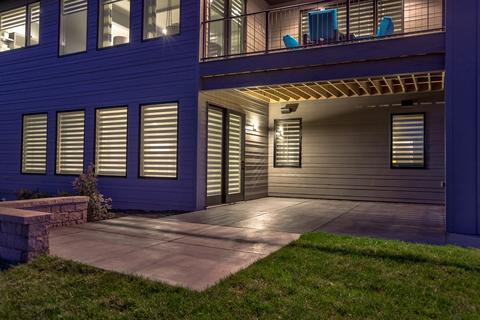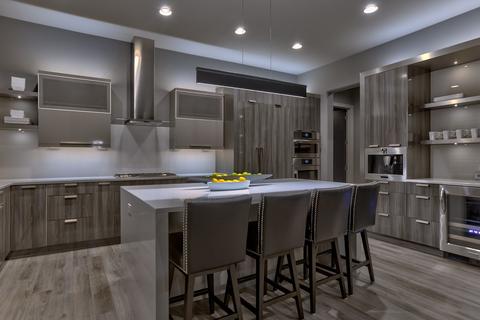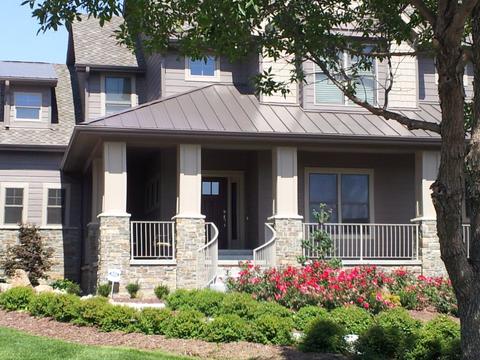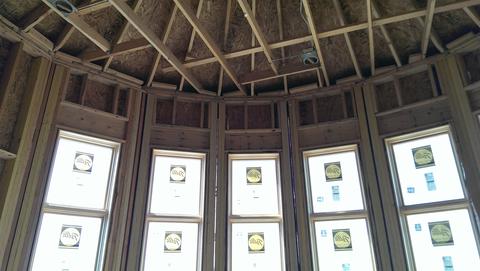Few things in life can be as exciting -- and equally daunting -- as building a new house. Throughout the design and construction process, there are multitudes of decisions to consider that will affect the final cost.
"Final cost." It's a phrase we associate with the sum total of all the labor and material costs that go into building a new house. But in reality, the final cost of your new house will continue to tally up long after you move in. Perhaps we should think of it as your home's ongoing cost.
Of course, there will be maintenance, taxes, neighborhood association fees and the like, but the main contributor to your home's ongoing cost will be its consumption of energy. With that in mind, here are six practical ways to help minimize the future ongoing costs of your new house before it's even built.
1. Choose High-Performance Windows and Solar Screens
One of the most effective ways to cut your home's energy consumption is to install high-performance windows. Be sure to select windows with spectrally selective glazing or qualified films that "bounce back" a healthy percentage of solar heat and UV rays. These windows not only keep your home cooler in hot weather, they also help protect upholstery, wood, and artwork. High-performance windows can even reduce the size and cost of a home's AC unit.
You can boost the energy-saving benefits of high-performance windows, or increase the energy efficiency of less efficient windows with the addition of solar window screens. These window screens not only reflect harmful solar UV rays, they also absorb heat and allow it to dissipate back into the outside air, away from the window's glass.

2. Select the Proper Insulation
When it comes to insulating your house plan, there are basically four options to consider -- each one with unique advantages.
Blanket Insulation: This type of insulation is the most common, and is made up of fiberglass or rockwool. It is available in rolls or pre-cut "batts" in varying thicknesses, that are sized to fit between the studs in the walls, floors or ceilings. Typically, the R-value of one inch of blanket insulation is R-3+. (R-value is the level of thermal resistance. The higher the R value number, the better its insulating qualities)
Blown-in Insulation: Usually consisting of cellulose or fiberglass, this type of insulation is packaged into compressed bundles that are fed into a machine that pulverizes and blows the material into wall cavities and/or attic spaces. One advantage of blown-in insulation is that it is very effective in filling even in hard-to-reach spots around pipes and electrical boxes. The R-value of blown-in insulation is typically R-3.5+ per inch.
Spray Foam Insulation: This type of insulation can be sprayed into wall spaces and does an excellent job of creating an air-tight seal from the outdoors. Spray foam's effective insulating qualities come from countless tiny air bubbles trapped inside the foam. There are two types of spray foam insulation -- Open Cell and Closed Cell. Open Cell insulation's bubbles are created by trapped air. It is less expensive than Closed Cell insulation, but it can allow water seepage and its R-value weighs in at R-3.5 per inch of thickness. The bubbles in Closed Cell insulation are created by an injected gas. This makes for a denser foam that is impermeable to both air and water. The R-value of Closed Cell insulation averages around R-7 per inch.
Foam Board (Rigid) Insulation: Like Closed Cell Spray Foam insulation, Foam Board Insulation contains billions of tiny bubbles, but it comes in rigid sheets, varying in thickness of 1/2" to 2". R-values per inch can range from R-3.6 to R-8, depending on the type of foam that is used in its manufacturing. The most common applications for Foam Board Insulation is on interior or exterior foundation walls, or beneath flooring.
3. Upgrade Your Appliances
Whether you're buying a dishwasher, clothes dryer, refrigerator, or furnace, the energy efficiency of each appliance you choose can make a big difference in the ongoing cost of your new house. Always look for the Energy Star® label to ensure that you're buying a product that exceeds government standards. Also, pay attention to the Energy Guide label which will allow you to compare the typical annual energy costs of different models. Whenever possible, choose appliances that run on natural gas, rather than electricity, as they are more economical to use in the long run. And lastly, resist the mindset that "bigger is better." Buyers often "oversize" appliances such as air conditioners, furnaces and water heaters, only to wind up with higher-than-necessary utility bills.

4. Plant Trees
It may sound too simple, but planting a tree to shade your home can help cut energy costs in warm weather and can even make your home easier to heat in the winter. According to the USDA Forest Service, trees that are properly placed around your house plan can reduce your air conditioning needs by up to 30% and your heating costs by 20% to 50%. Furthermore, the US Department of Energy says three properly placed trees could reduce utility cost by $100 to $250 per year. Considering that trees also improve a home's curb appeal, planting them around your new house plan would be a win-win.

5. Install Reflective Roofing
Today's roofing materials, along with many other components of your new house, have been significantly improved with regard to energy efficiency. Today's energy efficient roofing materials actually work to reflect the sun's heat, which in turn, reduces the strain on air conditioning systems. These reflective, or "cool" roofs are actually cooler to the touch, which serves to reduce expansion and contraction of the roofing material. As a result, reflective roofs last longer than ordinary roofs. As with your appliance choices, be sure to select roofing materials that bear the Energy Star® label.
6. Seal Up the Cracks and Crevices
If we could see the air that leaks in or out of our homes, many of us would feel as if we lived in a house made of Swiss cheese. Air, like water, is relentless in its pursuit of a path leading inside or outside the house. In fact, studies have shown that air infiltration can cause up to 35% of a home's heat loss. Of course, the proper installation of high-performance windows and insulation is key to reducing air infiltration, but it is also essential to seal up less noticeable areas where air can pass through the home's shell. Be mindful to seal the openings around electrical outlets and switches, recessed lighting, plumbing vents and any cracks or crevices that might be hidden around windows or doors. Be sure to talk with your building contractor about taking extra steps to reduce your home's air leaks. No one wants to live in a house plan made of Swiss cheese. (Mice would certainly be an even bigger problem to deal with.)

Remember...There's No Such Thing as the "Final Cost."
The practicality of saving energy is a responsibility we all want to embrace, not only for the sake of the environment but also for the for the sake of our wallets -- especially when it comes to the construction of a new house. As you consult with your house plan designer and your builder, you'll be making several decisions that will impact the size of your new home's long-term "energy footprint." As we know, the size of such a footprint goes hand-in-hand with its cost. So with that, be mindful of these six suggestions that will help reduce the size of your new house plans energy footprint -- and will, over time, save you thousands of dollars in ongoing costs.
